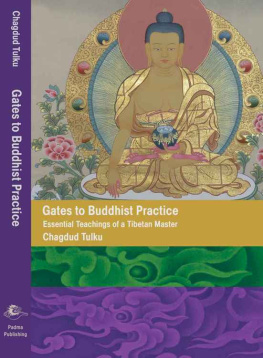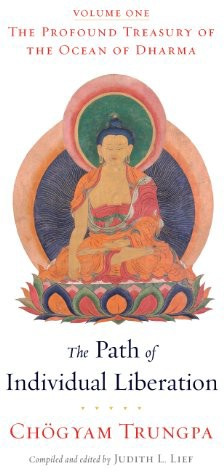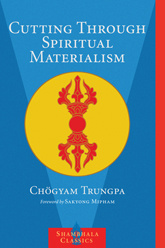All rights reserved.
No part of this book may be reproduced in any form or by any means, electronic or mechanical, including photography, recording, or by any information storage and retrieval system or technologies now known or later developed, without permission in writing from the publisher.
Names: Thubten Zopa, Rinpoche, 1945 author. | Huei, Yeo Puay, editor.
Title: The Four Noble Truths: a guide to everyday life / Lama Zopa Rinpoche; edited by Yeo Puay Huei.
Description: Somerville, MA: Wisdom Publications, 2018. | Includes bibliographical references and index. |
Identifiers: LCCN 2017048508 (print) | LCCN 2017050858 (ebook) | ISBN 9781614294092 (ebook) | ISBN 9781614293941 (pbk.: alk. paper)
Subjects: LCSH: Four Noble Truths.
Classification: LCC BQ4230 (ebook) | LCC BQ4230 .T49 2018 (print) | DDC 294.3/42 dc23
Cover and interior design by Gopa&Ted2, Inc.
EDITORS PREFACE
S IMPLE WORDS to illuminate the Buddhas profound teachings are rare. Experiential teachings on the Buddhadharma are rarer still. Over a coffee table conversation at Malaysias Kuala Lumpur airport, Kyabje Lama Zopa Rinpoche suggested I attempt a book on the four noble truths based on his teachings over the years. I hesitated. After all, Rinpoche not only teaches the Dharma but also lives it. Further, what has Rinpoche taught in the past forty-five years that was not the four noble truths? To fail in accurately compiling Rinpoches teachings on the entire Dharma would be to belittle this precious lamas life and lifework. I believe Rinpoche saw through my hesitation. He whipped out his dice, did a quick divination, and offered encouragement. I am deeply grateful.
This book consists of Rinpoches experiential teachings given over a span of forty-five years. Nothing about Rinpoches actions is ordinary. Everything about his being is interwoven with Dharma.
At the end of each chapter are stories or anecdotes from the life of Kyabje Lama Zopa Rinpoche. Most are from the journals of Ven. Roger Kunsang, the devoted monk attendant and secretary to Rinpoche for almost thirty years. Some are from lamas and senior students who witnessed events firsthand. This generous sharing of factual accounts offers glimpses into Rinpoches daily life and a taste of the lived experience of Dharma.
I offer special thanks to Geshe Tenzin Zopa, whose conversations with Rinpoche on the need for yigchas (study textbooks) of Rinpoches teachings somehow led to the suggestion of this book. I am hugely grateful for the generous help of Dr. Nick Ribush of the Lama Yeshe Wisdom Archive, his team, and the many diligent transcribers who have produced thousands of pages of documented teachings by Rinpoche. I especially thank Steve Wilhelm and Mary Petrusewicz, who masterfully edited this manuscript, and David Kittelstrom, whose kindness made the editorial journey less stressful than touted to be. The book is now humbly offered to the reader. Any mistakes, especially omissions, are mine alone.
Rajiv Mehrotra of the Foundation for Universal Responsibility of His Holiness the Dalai Lama and Ashok Chopra of Hay House Publishers India have kindly given permission to use the line drawing of the Wheel of Life from The End of Suffering and the Discovery of Happiness: The Path of Tibetan Buddhism , by His Holiness the Dalai Lama.
This endeavor is dedicated to the good health, long life, and fulfillment of all the wishes of my root guru Kyabje Lama Zopa Rinpoche; all my gurus; my centers resident teachers past and present, who have been my lamps on the path; and the family of Losang Dragpa Centre, Malaysia.
May all sentient beings be guided by perfectly qualified Mahayana masters and complete the path to enlightenment. May the Buddhadharma flourish. This dedication, prayer of dedication, and person are all empty and have no inherent existence.
Yeo Puay Huei
Kuala Lumpur, Malaysia
INTRODUCTION:
WORKING WITH THE MIND
In essence the four noble truths say that we all naturally desire happiness and do not wish to suffer.... If we are to pursue our aspiration to gain freedom from suffering, we need to clearly understand the causes and conditions that give rise to suffering and strive to eliminate them. Additionally we must clearly understand the causes and conditions that give rise to happiness as well and actively practice them. Having established the framework of liberation in the four noble truths, the Buddha detailed the... steps along the path to enlightenment... how the principles of the four noble truths are to be applied in ones day-to-day spiritual life.
HIS HOLINESS THE DALAI LAMA,
Essence of the Heart Sutra
H APPINESS AND SUFFERING are part of our life experience, but they do not come from the external world. They come from within, from our own minds. Suffering springs from afflictions in our minds.
Until we understand the causes of suffering, no matter our intellect, education, or wealth, no matter the ordinary success we may have achieved, in the heart there is something missing, there is no real peace. The heart is hollow.
To transform our minds into one of happiness, we start by pacifying the mind, separating the mind from the causes of suffering. When this happens liberation! And if we are then able to cease even the very subtle mental imprints of negative action, speech, and thought enlightenment!
The process of inner transformation begins with understanding the nature of mind.
THE VALUE OF AN OPEN MIND
How wonderful it is to open our minds! With an open mind were open to exploration, which is the opposite of being limited by a closed and rigid mind as hard as iron, stuck to old concepts. An open mind enables us to look for fresh meaning and a better life. It allows us to investigate, check, and analyze.
We need to freely investigate whatever is being asserted. We need to apply analysis, logic, and reasoning to whatever is being taught before accepting it, whether the teaching is Eastern philosophy, Western philosophy, a teaching by Guru Shakyamuni Buddha, or a subject explained by scientists.
Guru Shakyamuni Buddha said, Examine my teachings well, the way a goldsmith examines gold, by cutting it, rubbing it, and melting it to see whether it is false gold, mixed, or pure.
In the same way, we should examine the Buddhas teachings or Dharma, using reasoning, analysis, and logic, but not blind faith. Only after we have done that should we consider accepting his teachings.
Therefore when we first read about the Dharma, we should not accept it without thinking about it. Questioning Dharma is what we are expected to do at this starting point. Emotionally clutching to words or the idea of Buddha in heaven brings little benefit. This is because when life gets tough and problems arise, we will have no inner understanding of the Dharma with which to support ourselves.
Thank you to everybody who is seeking happiness differently from how you have sought it before. This time you are freeing yourselves to open the door to liberation, the door of the great release, through understanding the inner, spiritual method to gain happiness. This is a key point because happiness is not found outside but within. Happiness lies within the mind. Whether we are talking about temporal or ultimate happiness there is no other way to find it except through developing the mind.


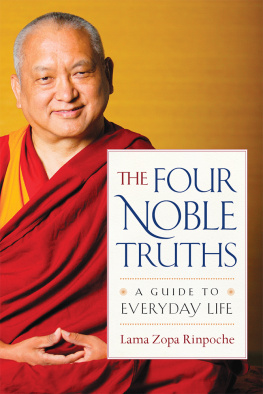
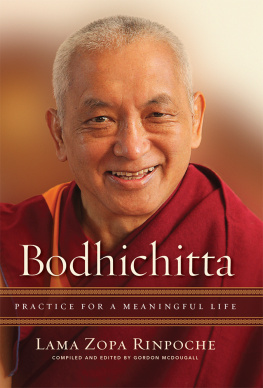
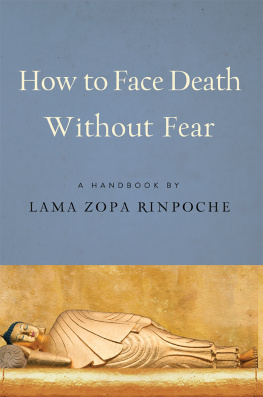
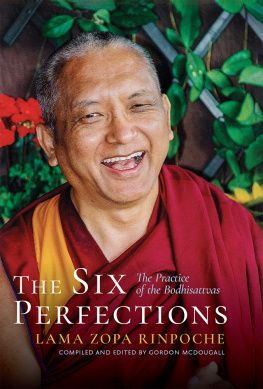
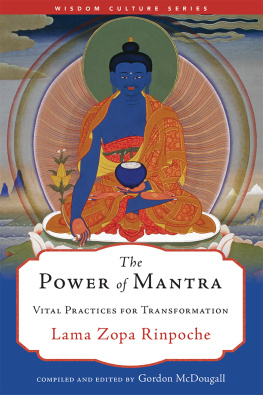
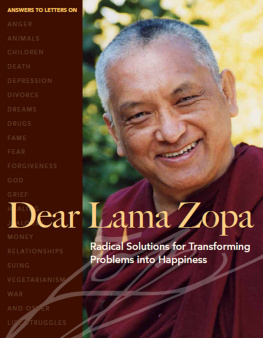

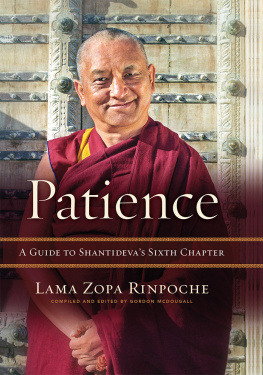

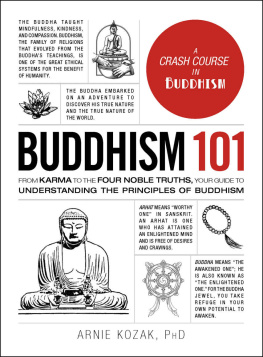
![Dalaï Lama XIV. - An introduction to Buddhism: [teachings on the Four noble truths, The eight verses on training the mind and the Lamp for the path to enlightenment]](/uploads/posts/book/207935/thumbs/dala-lama-xiv-an-introduction-to-buddhism.jpg)
